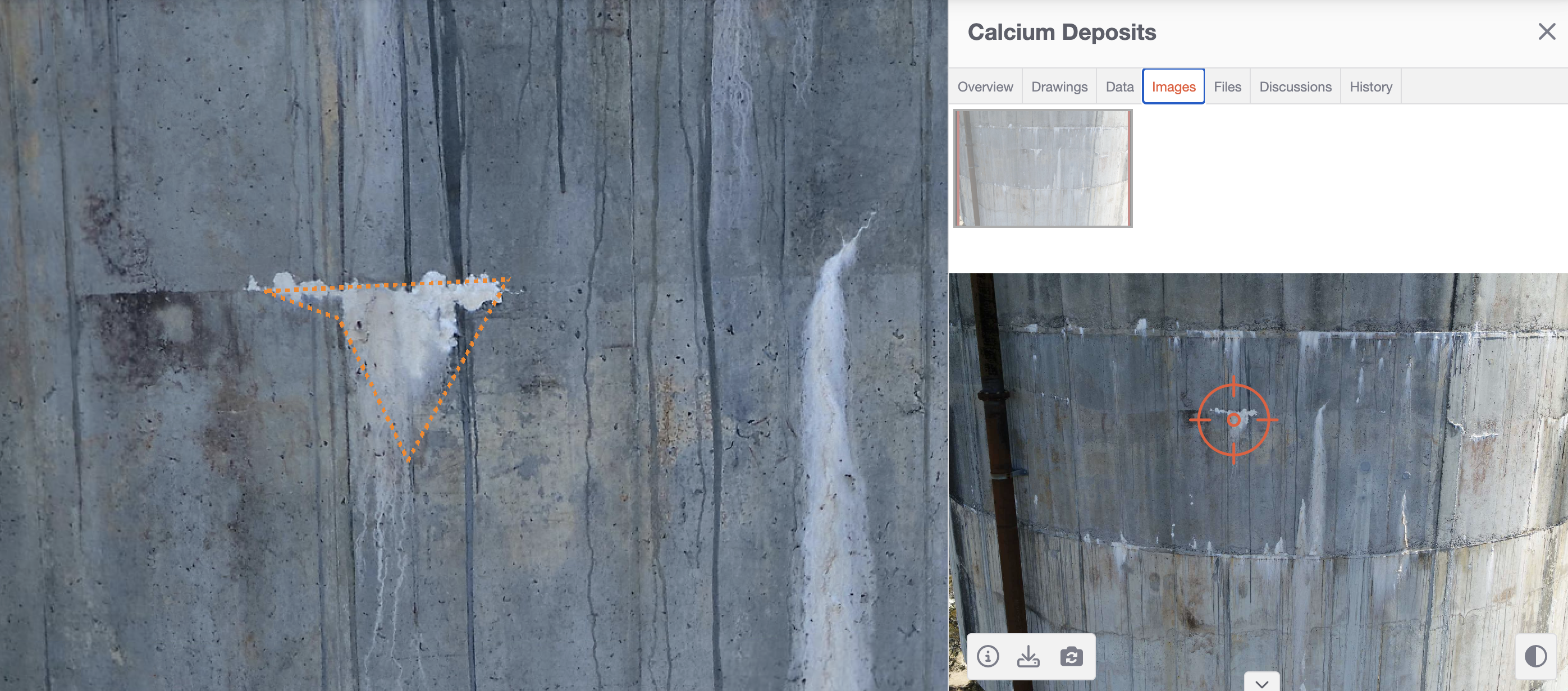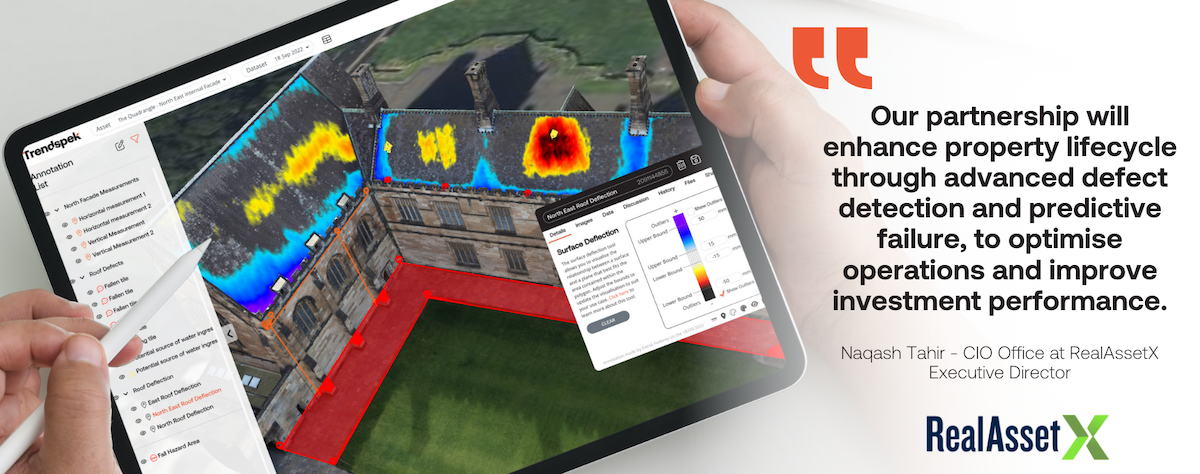6 trends to look out for in asset management in 2024
Author: Derek Feebrey
2 January 2024
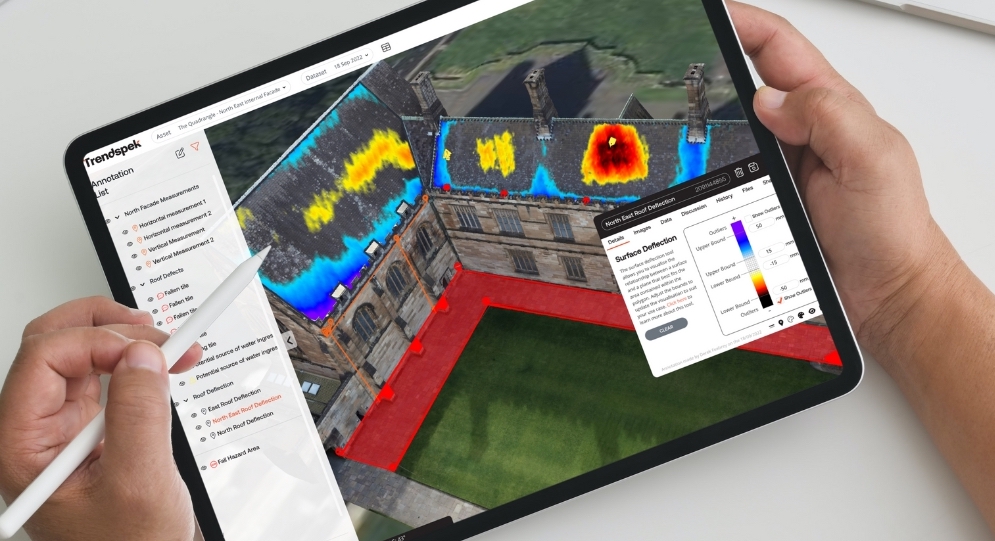
With increasing resource shortages, asset owners are turning to digital-led solutions to inspect, report on and monitor their assets more effectively. Trendspek CEO Derek Feebrey shares his predictions on how asset management is shaping up for 2024.
The headlines say it all: we’re in the age of infrastructure failure. And things are only getting worse.
Just recently according to the ABC, Infrastructure Australia has raised the alarm for a third time on resource shortages, reporting that the industry is operating with only 43% of required workers.
"Infrastructure Australia's annual market capacity report has revealed there are only 177,000 workers currently in the system despite there being enough demand for the equivalent of 405,000 workers."
Decades of under-investment has led us to a point of crisis, and current approaches to identifying and prioritising asset defects are failing due to resource shortages.
Additionally, traditional inspection methods (using pen and paper reports, or manual labour on-site) can be inconsistent, slow and dangerous.
This is because many of these reports are based on "representative inspections," or assumptions, resulting in costly repeat site visits when defects are missed by the human eye.
So how can we challenge the status quo?
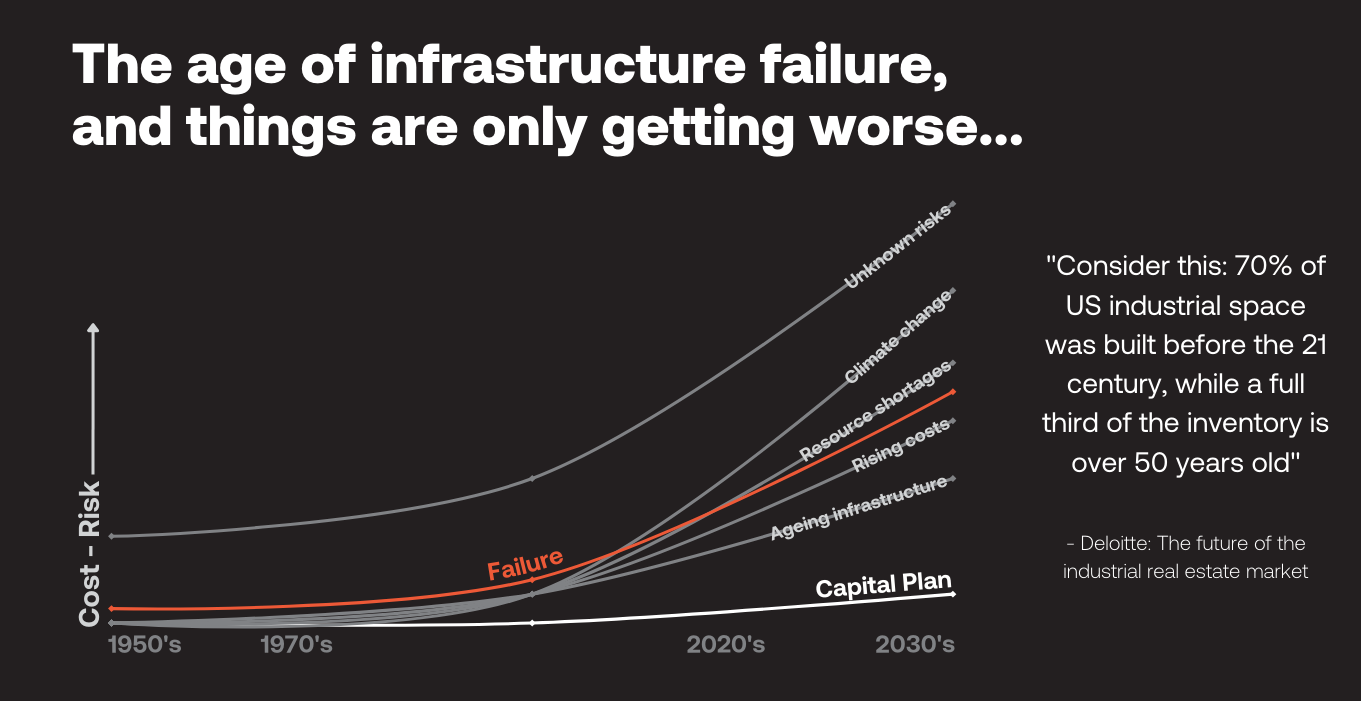
Digital solutions are providing a lifeline for resource shortages.
Faced with these concerning statistics, a growing community of asset owners are doing things differently.
They're embracing digital-led inspection solutions and workflows that are:
- Evidence-led
- Resource light
- Consistent
- Quick, safe, scalable
- Multi-purpose over lifecycle
Trendspek, an innovative 3D software solution, was launched to serve this "new" style of asset management.
In 2023, we saw hundreds of global asset owners adopt Trendspek to make major efficiency gains across their operations, using it to write tenders, and in some cases even making it company policy to improve workflows.
With growing proof that technology drives safer, faster and more efficient inspections, we’re at a tipping point of how things will be done moving forward.
So, what comes next? Here are 6 predictions for real asset inspections in 2024.

Asset owners want more.
They want to make decisions based on evidence; not assumptions. They want to protect against risk, reputation damage and cost blowouts.
Each day, there are more benefits realised for turning to digital solutions like Trendspek as more portfolios are completed with speed, at half the cost.
One example of an organisation leading the charge of tech adoption is PGIM Real Estate.
Previously, PGIM would have abseilers come down over the roof to conduct the inspection as part of its comprehensive due diligence. But in those situations, they’re relying on the human eye — meaning it can be easy to miss crucial defects.
Using Trendspek, they’ve been able to inspect property “much faster, more cost-effectively and more accurately."
Andrew Neary, Executive Director of PGIM Real Estate. says:
“The way it has always been done is not always the best way. When compared to traditional inspection, Trendspek was miles ahead on time, cost and accuracy.”

Understandably, change is hard — new workflows, stakeholder sign off, budgets and so on.
But the organisations who succeed are the ones who find a way to make it happen, and quickly. Those who wait may find themselves exposed, both financially and from a safety perspective.
Just in 2023 alone, we saw:
- Inspector fatalities
- Debris fall from facades on public areas (eg. RAAC concrete across 100 UK schools)
- Significant building/infrastructure risks that were “unknown” to owners.
According to The Guardian, as many as 250 road and rail infrastructure projects led by the Australian government that have yet to begin construction may be scrapped or delayed as a cost-saving measure to pay for at least $33bn in cost overruns.
It’s not just limited to financial risks either, with loss of life continuing to be a real threat - such as putting workers on unstable structures, or to work with heavy machinery.
Safe Work Australia reported 27 fatalities across the construction industry in 2022, with 7 of those deaths being due to “falls, trips and slips of a person” and 8 of those deaths “being hit by moving objects.”
Adopting digital solutions can safeguard against both financial and safety risk.
One organisation that's embraced technology to prioritise the safety of its employees is Welsh Water.
The not-for-profit cleans and redistributes waste water for more than 3 million people in Wales, managing large-scale infrastructure including treatment facilities, reservoirs and dams.
In 2023, they implemented Trendspek alongside a growing aerial service to keep workers safe while surveying large structures with hard-to-reach areas.
Adam Davis, Statutory Maintenance Manager at Welsh Water says:
“Using Trendspek we reduced risk – and that’s an area we really focus heavily on at Welsh Water – making the business as safe as possible.”

Whether it’s engineering or advisory firms, consultants are finding themselves at a fork in the road.
As digital solutions become more accessible, those leading with “traditional” approaches may find themselves losing more bids to more innovative approaches.
I'm continually seeing more organisations debunk myths such as "it will replace my job" or "take my revenue."
Technology adoption has been the exact opposite, leading to greater collaboration with interstate and global experts.
This knowledge share has vastly improved the accuracy, timing and costs of maintenance planning – as an example, an organisation managing bridges can now engage specialist engineers from the other side of the world to ensure the best results for a specific condition assessment.
The digital transformation of assets has also vastly minimised safety risks.
By using drones for aerial surveys and reducing the need for personnel on-site (either dangling from ropes, or operating heavy machinery), asset owners can now be more assured than ever that workers are safe.
The rise of digital twin 3D models has given engineers and consultants the ability to inspect and markup defects from their computers, rather than visiting the site.
Within Trendspek's platform, our Surface Deflection tool stitches thousands of images captured by drones into a heat map visualisation to measure deflection on a roof. By using these heat maps, surveyors can avoid working at dangerous heights, and can save on the overheard of heavy machinery or rope access
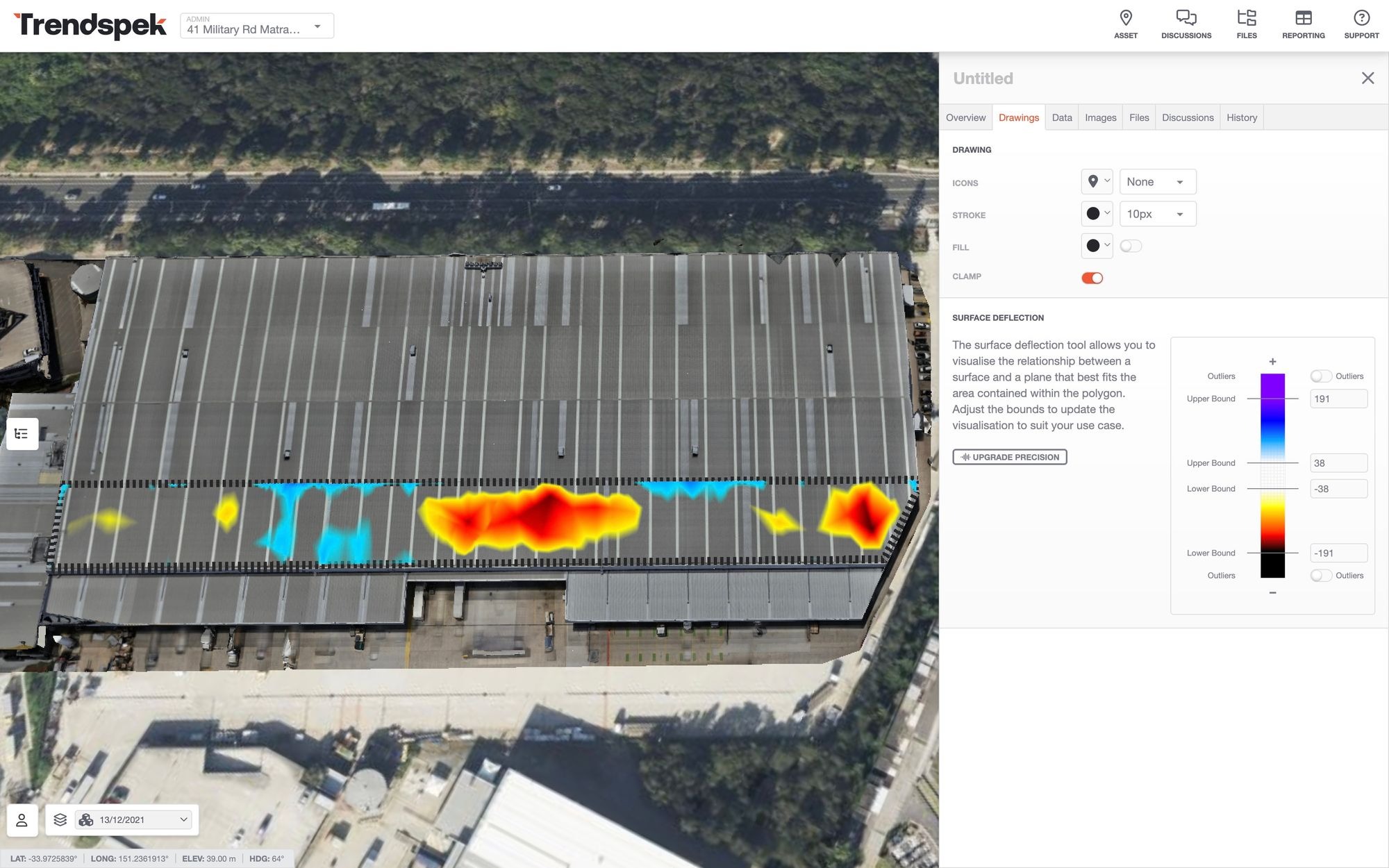 Trendspek's Surface Deflection tool autogenerates heat map visualisations to identify roof deflection.
Trendspek's Surface Deflection tool autogenerates heat map visualisations to identify roof deflection.

Whether it’s drones, digital twins or AI, everyone seems to have a past horror story where they may have jumped on a technology trend that wasn’t fit for purpose.
Organisations will have to reassess:
- Do we have the right software?
- Do we need a complete monster of a strategy before we do anything?
- Do we use best-of-breed technology for each objective?
- Are we a software company? Or are we an engineering company, or asset owner?
I have seen several organisations pursue solutions that were never going to be fit for purpose, or expect a solution to do everything.
Or worse, do nothing as they wait for something that may be available in 2050, forgetting that it is available today.
Organisations succeed when they invest in a success plan with clearly defined pilot/first deployment success metrics. Wallbridge Gilbert Aztec did just that.
Using Trendspek's 3D models, they efficiently inspected a portfolio of container cranes with twice the speed and half the resources.
Andrew Brown, Group Digital Engineering Manager at Wallbridge Gilbert Aztec says:
"Our vision at WGA is to introduce new technologies across the business to deliver effective solutions for our clients and help manage risk."

Whether it’s circumstances relating to injury, fatality, cost blow-outs or insurance claims, questions will always be asked.
The “I didn’t know” may no longer hold up.
Representative inspections will start to leave stakeholders exposed when issues arise, and the question of “why didn’t you use a technology solution” will become harder to answer.
Especially when these solutions available in the market are:
- More comprehensive and accurate
- Faster to implement
- More cost-effective
- Easier to access
Infracorr is one of Australia's most trusted experts in the repair of complex concrete corrosion.
They've been using Trendspek since 2020 to transform durability solutions for engineers, using 3D models to identify and markup defects from their screens, down to the smallest hairline crack.
Ian Godson, Managing Director of Infracorr says:
“You just wouldn’t be able to tag defects to 100% of the buildings without a software like Trendspek, it would take too long and cost too much. Now, we can identify every visible defect and know exactly where it is.”

Like everywhere else, the infrastructure industry is experiencing a shift to embrace AI.
The advancements of "computer vision" – a combination of AI systems with imagery, such as drones, cameras or sensors – is set to be a game-changer in how asset management is carried out, enabling organisations to inspect visually-challenging or hard-to-reach assets like never before, such as glass facades or underneath bridges.
From steerable LiDAR; to predictive analytics to improve construction processes; to better inspecting visually-challenging assets like glass facades without fighting against reflections, AI opens up a wave of new possibilities.
Trendspek is dedicated to advancing AI across real asset inspections by making strategic partnerships with leading innovation labs, such as ARIAM Research Hub and Real AssetX..
Naqash Tahir, Executive Director, CIO Office at RealAssetX, says:
“Our partnership with Trendspek will enhance property lifecycle through advanced defect detection and predictive failure, and ultimately optimise operations for asset owners improve investment performance."
Conclusion
As more organisations realise the benefits of digitally identifying and tracking building defects over time, we will see a shift from "the old way" to a new normal.
This innovative approach will unlock a whole new way of working, providing asset owners full context of their assets online while minimising risks across costs, safety, time and scope.
By turning to digital turnkey solutions, like Trendspek, asset owners can open up new possibilities for global insurance underwriting models, an ability to accurately plan what requires remediation, when and how much it will cost, and a customised risk vs. cost matrix.
Digital-led reporting outputs can also better inform construction methodologies, tenders and workflows to minimise hurdles and repeat site visits. Instead of relying on printed PDF reports, you have all the data at your fingertips to share and collaborate with global stakeholders.
From what I've seen so far in 2023, I'm excited to see the industry further adapt and what comes next.
Derek Feebrey
About Trendspek
Industry Leading Asset Management 3D Software
Trendspek is leading a revolution of asset management with its innovative 3D software solution, empowering industry leaders, asset owners and engineers with the ability to digitally inspect infrastructure and streamline their full asset lifecycle.
Transform hundreds of thousands of data points into interactive 3D models to safely audit, collaborate and report on your assets to minimise risk and maximise lifespan — all without leaving your desk.
